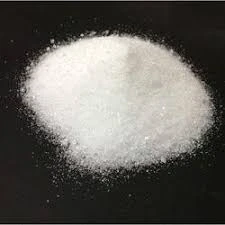The Role of Adhesive Chemicals in Modern Industry
Adhesives, which are often referred to as bonding agents, play a crucial role across various industries, from construction and automotive to electronics and packaging. At the heart of these adhesives lies a category of substances known as adhesive chemicals, which enable different materials to bond securely. Understanding the significance, types, and applications of adhesive chemicals is essential for grasping their impact on modern manufacturing processes and consumer products.
Understanding Adhesive Chemicals
Adhesive chemicals can be defined as the compounds used to create a bond between two or more surfaces. These chemicals can be derived from natural sources, such as animal proteins and plant resins, or produced synthetically through chemical processes. The choice of adhesive chemical often depends on the materials being bonded, the required strength of the bond, and the environmental conditions the adhesive must withstand.
Types of Adhesive Chemicals
Adhesive chemicals can be categorized into several groups based on their formulation and application
. The main types include1. Natural Adhesives These are derived from natural sources. Common examples include starch-based and protein-based adhesives. While they are often biodegradable and environmentally friendly, their performance may not match that of synthetic alternatives.
2. Synthetic Adhesives These are manufactured through chemical processes and have gained popularity due to their superior bonding capabilities. Examples include epoxy, polyurethane, and acrylic adhesives. Synthetic adhesives are versatile, often exhibiting high resistance to heat, moisture, and chemicals.
3. Pressure-Sensitive Adhesives (PSAs) These adhesives provide an instant bond when pressure is applied, without the need for heat or solvents. They are commonly used in tape products and labels.
4. Structural Adhesives These adhesives are used to bond load-bearing components, especially in the automotive and aerospace industries. They are designed to endure stress and strain over time, providing a robust and durable bond.
adhesive chemical

5. Hot Melt Adhesives These adhesives are applied in a molten state and cool rapidly to form a strong bond. They are widely used in packaging, label application, and woodworking due to their quick setting time.
Applications of Adhesive Chemicals
The applications of adhesive chemicals are vast and varied. In the construction industry, adhesive chemicals are used for flooring, roofing, and insulation materials, promoting stronger and more energy-efficient buildings. In the automotive sector, adhesives enable lightweight construction, which improves fuel efficiency. Vehicles now utilize adhesives to bond glass, trim, and various components, enhancing structural integrity and reducing weight.
In electronics, adhesive chemicals play a critical role in assembling components, such as circuit boards and displays. They provide insulation and protection from moisture and environmental factors, ensuring the longevity of electronic devices. Similarly, in the packaging industry, adhesives are essential for creating secure seals in containers, boxes, and labels, maintaining product integrity during transportation and storage.
Environmental Considerations
While adhesive chemicals are vital for various industries, environmental considerations are becoming increasingly important. Many manufacturers are exploring eco-friendly alternatives that minimize the environmental impact of adhesive production and disposal. The development of bio-based adhesives, which utilize renewable resources, is one such approach to creating more sustainable bonding solutions.
Additionally, regulatory measures are being implemented to limit the amount of volatile organic compounds (VOCs) emitted by certain adhesives, prompting manufacturers to innovate water-based and low-VOC formulations. This shift not only reduces environmental pollutants but also improves worker safety and health in manufacturing environments.
Conclusion
Adhesive chemicals are essential components in the fabric of modern industry, enabling the efficient and effective bonding of materials across various applications. As technology advances, the demand for innovative adhesive solutions continues to grow. By understanding the properties and uses of different adhesive chemicals, industries can optimize their production processes, enhance product performance, and contribute to environmental sustainability. As the landscape of adhesive technology evolves, the future looks promising for both manufacturers and consumers alike, ensuring strong bonds that support our daily lives and industries.
-
Rdp Powder: Key Considerations for Wholesalers in the Building Materials IndustryNewsJul.08,2025
-
Key Considerations for Wholesalers: Navigating the World of Hpmc - Based ProductsNewsJul.08,2025
-
Hpmc Detergent: Key Considerations for WholesalersNewsJul.08,2025
-
Key Considerations for Wholesalers: China Hpmc For Tile Adhesive, Coating Additives, Concrete Additives, and MoreNewsJul.08,2025
-
Crucial Considerations for Wholesalers: Navigating the World of Construction MaterialsNewsJul.08,2025
-
Key Considerations for Wholesalers Sourcing Additive For Cement, Additive For Concrete, Additive For Putty from Additive Manufacturer Shijiazhuang Gaocheng District Yongfeng Cellulose Co., Ltd.NewsJul.08,2025




